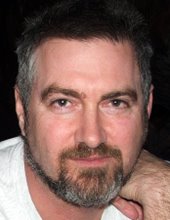Tuesday, December 17, 2013
Doctors and probability
If a cancer test is 95% accurate and 1,0000 people are administered the test, then per the accuracy there are 50 false positives. However, ask your doctor the probability of his patient who tested positive having cancer and he will more than likely confuse the accuracy of the test with the probability and tell you there is a 95% chance. However, mathematically you have 1 positive and 50 false positives. Therefore, in fact, the probability of any given person that tests positive in that sample of actually having cancer is 1/51. Then again, I guess scaring the hell out of 50 people for every one the doctor needs to treat can be more profitable!
Kevin's Rebutal: Actually you do have two flaws in your numbers there isn’t a number representing the actual number true positives (you assumed 1000:1, I think) and the 5% includes both false positives and false negatives. The probability of someone testing positive equals the probability of the person actually having cancer and the probability of a person receiving a false positive. If the probability of a person in 1,000 people is 1000:1 and all inaccurate tests come back as false positives then your statement below is correct that there is only 1 true positive for every 51 positives.
Total Positive Results = TP/1000 + FP/50
Another thing to think about is the probability that the true positive could fall in the in accurate group and result in a false negative.
The 95% accuracy is a reflection of some sample size. If you consider 95 false positives out of 100 tested you have 5 or 950 of 1000 you have 50 to reflect the accuracy. There are no false negatives in the sample size, as doctors would not call people up who passed the test, merely the ones that failed or showed positive results to cancer. So, with 50 out of 1000 people testing a false positive being called in with the one person that actually has it, you have 51 people being informed that they tested positive. Of the 51, 50 are known to have shown positive incorrectly, which is why the test is rated 95% accurate. In any case, you and John make my point, human nature is to not understand probability. Even with simple math and an understandable description, John found 17 of 19 and 1 of 19, and you consider the fact that the doctor should somehow consider calling 50 people at random from the 950 people who showed no cancer to let them know the test may not have worked on them. Popper would have questioned such a theory. As per you last sentence, from the accuracy of the test, you use one of a sample population to find the accuracy. The total positive results are a default in the math, not an unknown. It makes sense that you can simply count the results. You are more correct than the doctors normally are…
Tranquility grows in the absence of praise or blame but remains indirectly proportional to the need. --Nick Gilliland
Subscribe to:
Post Comments (Atom)

No comments:
Post a Comment